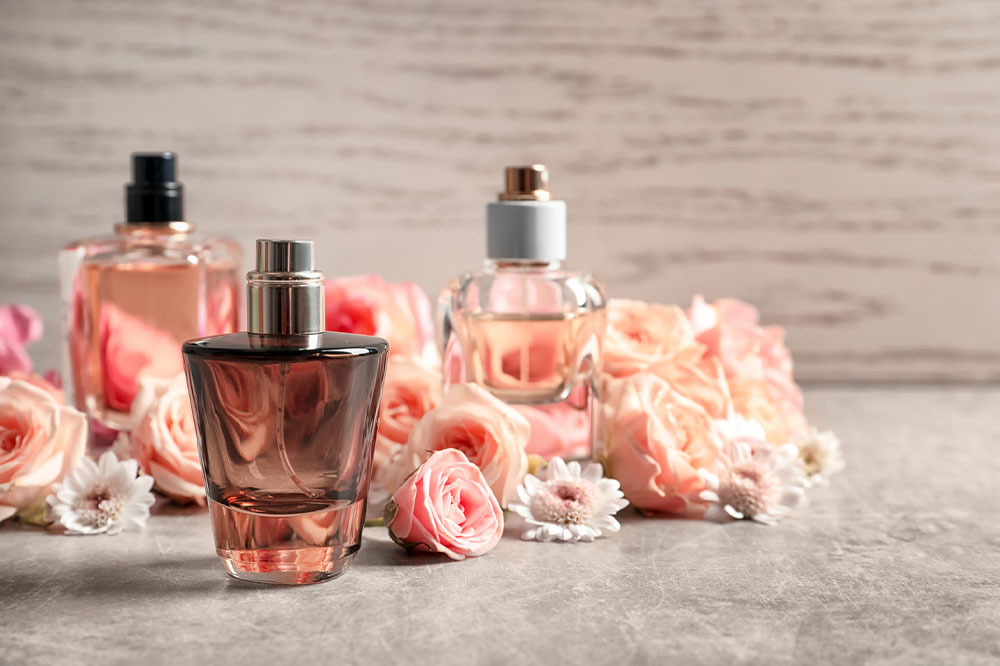Understanding fragrance families and how are perfumes made

Smelling good can help alleviate your mood, increase confidence, mask body odor, and even leave a remarkable impression on those around you. People have used perfumes and fragrances since ancient times, and the earliest recorded perfumery dates to the second millennium BC in Mesopotamia. Perfumes are made from a wide range of fragrant substances and aromatic compounds derived from plant and animal sources. Today, perfumes and fragrances are also manufactured from synthetic materials.
Fragrance families
Understanding different types of perfumes and scents can help you pick the one that suits you. Fragrances are usually categorized into families on the basis of their ingredients and dominant themes. Some popular plant sources for fragrances include flowers, fruits, tree bark, seeds, wood, roots, resins, and leaves. Some perfumes are also extracted from animal sources, such as ambergris, which is secreted by the sperm whale, musk from the Himalayan male musk deer, and honeycomb from bees. The major families of fragrances are:
Floral: These fragrances are very commonly used in creating perfumes. A wide range of flowers, including roses, jasmine, mimosa, narcissus, cassie, and scented geranium, are used to create perfumes and fragrances.
- Single floral: This is when a single flower’s scent is used to create a fragrance.
- Floral bouquet: A combination of extracts of different flowers is used to create a fragrance.
Amber or oriental: Oriental fragrances represent warmth and sensuality, combining both animal and plant sources. Typical fragrances in this family include vanilla, ambergris, woods, and musk.
Woody: These use scents from wood belonging to trees like sandalwood, cedar, patchouli, and vetiver.
Leather: This category of fragrances includes notes of tobacco, honey, and wood.
Citrus: Extracted from the blossoms of citrus fruits, including orange, grapefruit, bergamot, and lemon, the citrus fragrance family delivers a sense of freshness and the experience of summer.
Fruity: These scents are sourced from non-citrus fruits like mango, peach, passion fruit, and black currant.
Gourmand: This category consists of food-like scents, dominated by notes of vanilla and tonka beans.
Aquatic: This is a modern fragrance family that is reminiscent of the ocean breeze. It is usually made of synthetic compounds.
Chypre: This traditional fragrance family is dominated by the scents of oakmoss, bergamot, and labdanum.
Spicy: Made from common spices, such as cinnamon, cloves, and nutmeg, this category of fragrances is close to the oriental family of fragrances.
How are perfumes made?
The perfumes and fragrances industry has been around for centuries, and many of the traditional processes to make perfumes are used even today. Here are the steps for making a perfume:
Collection of raw materials: The first step is to get the ingredients required to manufacture the perfume. This includes flowers, blossoms, resins, wood, bark, leaves, animal secretions, and spices. Raw materials may be found in multiple regions around the world, so they would need to be imported. In addition to natural ingredients, other products used in the manufacturing of perfumes include petrochemicals, coal tars, coal, and synthetic materials. Sometimes, water is used to dilute the primary ingredients.
Extraction of oils: The aromatic compounds and fragrances are extracted from the raw material using the following methods:
- Expression: This is the oldest and simplest method of extraction, involving manually or mechanically pressing the plant ingredients to squeeze out the oil.
- Steam distillation: Steam is passed through the raw materials, turning essential oil into gas, which is then cooled and liquified. Alternatively, the plant ingredients can be boiled in water to extract oils.
- Solvent extraction: The raw materials are placed in rotating drums, and benzene or petroleum ether is added to extract the essential oils.
- Enfleurage: This method of extraction involves placing flowers on glass sheets coated with grease. Gradually, the grease absorbs the fragrance.
- Maceration: Warmed fats are used to absorb the fragrance. These are later dissolved to extract the essential oil.
Blending: The essential oils now extracted are blended by an expert perfumer as per the formula developed to make the perfect perfume. The scent may require a blend of hundreds of ingredients. Perfumes may contain different percentages of essential oils. For example, colognes contain 3–5% essential oil. Most perfumes contain 10–20% essential oils.
Aging: Many blended scents are aged for months or years to develop the perfect perfume.
Perfumes are increasingly being used to heal illnesses and mental health issues, including depression, and this is known as aromatherapy. For example, lavender oil is helpful in dealing with stress, anxiety, and sleep issues. Tea tree oil is often used to treat wounds and insect bites. Lemon oil is a mood booster and is often used in household cleaning products to substitute synthetic chemicals.
